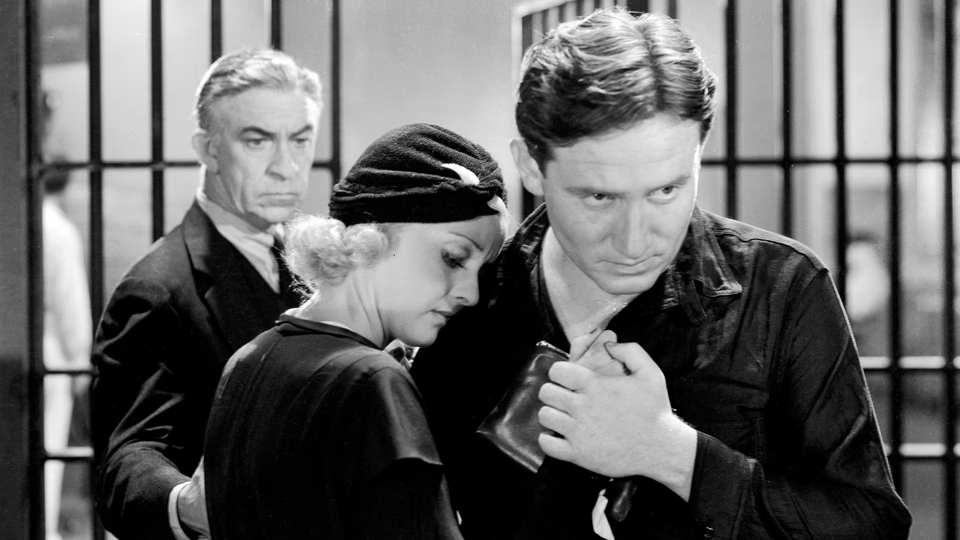20,000 Years in Sing Sing

Spencer Tracy plays a smart but arrogant young convict entering New York’s Sing Sing prison, where he’s set to serve five to thirty years for armed robbery. There, he clashes with the incorruptible warden, but time sees the two develop a mutual respect and trust. This trust is tested when the warden grants Tracy twenty-four hours leave to visit his ailing girlfriend, played by Bette Davis.
Lewis Lawes, then warden of Sing Sing, wrote the source novel, which explains Arthur Byron’s cigar-chomping warden’s boy scout characterization. In an early scene, one of Tracy’s entourage—played with an easy sleaze by Louis Calhern—attempts to bribe the warden with five thousand dollars in bonds. As Calhern explains how there’s “bales more where that came from,” the warden grins and sets the bonds alight with his desktop cigar lighter.
When Calhern balks at the refusal to play ball, the warden lays into him, saying Tracy will get no special treatment. “People on the outside are supposed to be created free and equal but they aren’t,” he says. “In here, they are.” Suspect logic aside, the dialog crackles.
And it gets better. When the warden tries his moral reasoning with Tracy, it falls flat, with Tracy retorting, “Save that for Sunday warden, and let me pass the plate.” Good stuff.
The second act proves predictable. The warden confines Tracy to his cell when he refuses to work. Director Michael Curtiz mixes tight shots of Tracy with wide shots of the prisoners exiting their cells and marching with military precision. Tracy relents.
Then the obligatory prison break. The script helps by having Tracy recuse himself from the plan for superstitious reasons, thus leaving the escape’s outcome in doubt. Curtiz cuts between the prisoners and the warden’s response. He cloaks the desperate prisoners in shadows of bars, while the prison guards operate in the light, moving as an orderly unit, and firing tear gas. The guards’ efficiency creates a sense of oppressive inevitability that, combined with the darkness and smoke, feels almost horrific.
But it’s Tracy who makes the movie. It’s easy to imagine George Raft or even Humphrey Bogart in the role, and the film floundering because of it. Tracy convinces as a brash but intelligent thug. He inhabits the role in a way his contemporaries hadn’t yet mastered. Later in the film, he’s on death row and when a fellow inmate starts his march to the chair, Tracy tells him, “Give my regards to Mike… and look out you don’t catch cold.” It’s another hard-boiled line a lesser performer would have growled or emoted, but Tracy’s delivery conveys an unexpected pathos.
For her part, Davis begins the film as Tracy’s one-dimensional moll, but later sequences take advantage of her comparable talent. Her final scene with Tracy could have played as overwrought melodrama, but both performers recognize the camera’s immediacy and underplay the scene to terrific effect.
Indeed, my one nit lies with Curtiz, who ends the film one shot too early. We should see Tracy’s fate, even if it’s just a shot of the lights dimming as the executioner flips the switch. The film opens with Tracy entering the prison. It should have ended with him leaving.